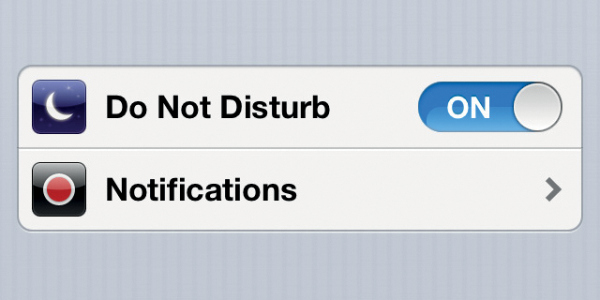We live in an interconnected world that is constantly striving for a share of our attention. Smartphones, tablets and wearable computers are always by our sides, with procrastination and distractions only ever one touch away.
A survey by TecMark in 2014 reported that the average user now performs 221 tasks a day on their smartphone and spends a staggering three hours per day looking at their phone [1]. There are currently a number of smartphone functions which can limit when and who you are disturbed by, as well as applications, which are designed to increase our productivity by changing our habits. In this digital review I focus on ways to improve personal productivity by reducing unwanted distractions.
Silence your smartphone notifications
The iPhone and iPad have a built in Do Not Disturb feature which limits when and who can contact you. The Do Not Disturb feature can be accessed from the settings or by swiping up from the bottom of the screen. When the Do Not Disturb feature is activated, a crescent moon icon is shown in the status bar next to battery status. The feature allows you to select which contact groups, favourites or if no one can contact you.
For those on Android, there are improvements for those who have been able to upgrade to the latest version of Android 5 ‘Lollipop’. The feature, which limits who can interrupt you, can be accessed by pressing the volume key and choosing from None, Priority or All. You can select which users are part of your priority group from your notification settings. For those not able to upgrade to ‘Lollipop’, there are a number of applications, which have a similar functionality, including a Do Not Disturb app (free to try, £1.90 full version) and Nights Keeper (free to try, £1.99 for the Pro version). Both apps are available through Google Play, and should you wish, can alert the person who is contacting you that you are unavailable at present.
Windows phone has an inbuilt feature called Quiet Hours, and Blackberry also has its own Do Not Disturb feature inbuilt into its phones.
Interruption free internet browsing
For those prone to procrastination caused by social media (Facebook, Twitter, YouTube, etc.), there are browser extensions that can be used to prevent access to sites, which you determine for a set amount of time. StayFocusd is one such browser extension available for free and works in Google Chrome, on all operating systems. Similar browser extensions include Productivity Owl, TimeWarp and Strict Workflow. An alternative approach is used by the Motivation extension which replaces your new tab page with a real-time counter that updates your rapidly increasing age as you procrastinate.
For those needing additional self-control, Microsoft Windows users can use Cold Turkey (free) or Freedom ($10) to block access to certain websites, the internet and even certain programmes. Mac users can choose from similar applications which block access to select websites in all internet browsers including SelfControl (free), and Focus ($19.99). Procrastination free word processors For those seeking distraction-free word processors, Q10 (Windows, Free), OmmWriter (Mac, Free) and FocusWriter (Windows / Mac / Linux, Free) are particularly popular. If you are using Microsoft Word, then a simple interference free alternative can be to select a full screen layout by going to the View menu and selecting Focus in Word 2013 or Full screen in Word versions 2003-2010. Hanx Writer (iPhone and iPad, Free) and Typewriter (Android, Free) offer a retro typewriter interface to decrease the disruption to your writing whilst using smartphones or tablets.
Organise your desktop
Applications I have found particularly useful when using laptops and larger screens are Spectacle (Mac, Free) and Divvy (Windows, Free). These applications allow you to move, resize and organise positions of your open programmes on your desktop. Meaning that you can have several applications open on your screen and improve your workflow between programmes.
Reference
1. Smartphone Usage Statistics 2014 – UK Survey of Smartphone Users. Tecmark. Accessed 18 Jan 2015 from
http://www.tecmark.co.uk/
smartphone-usage-data-uk-2014/






